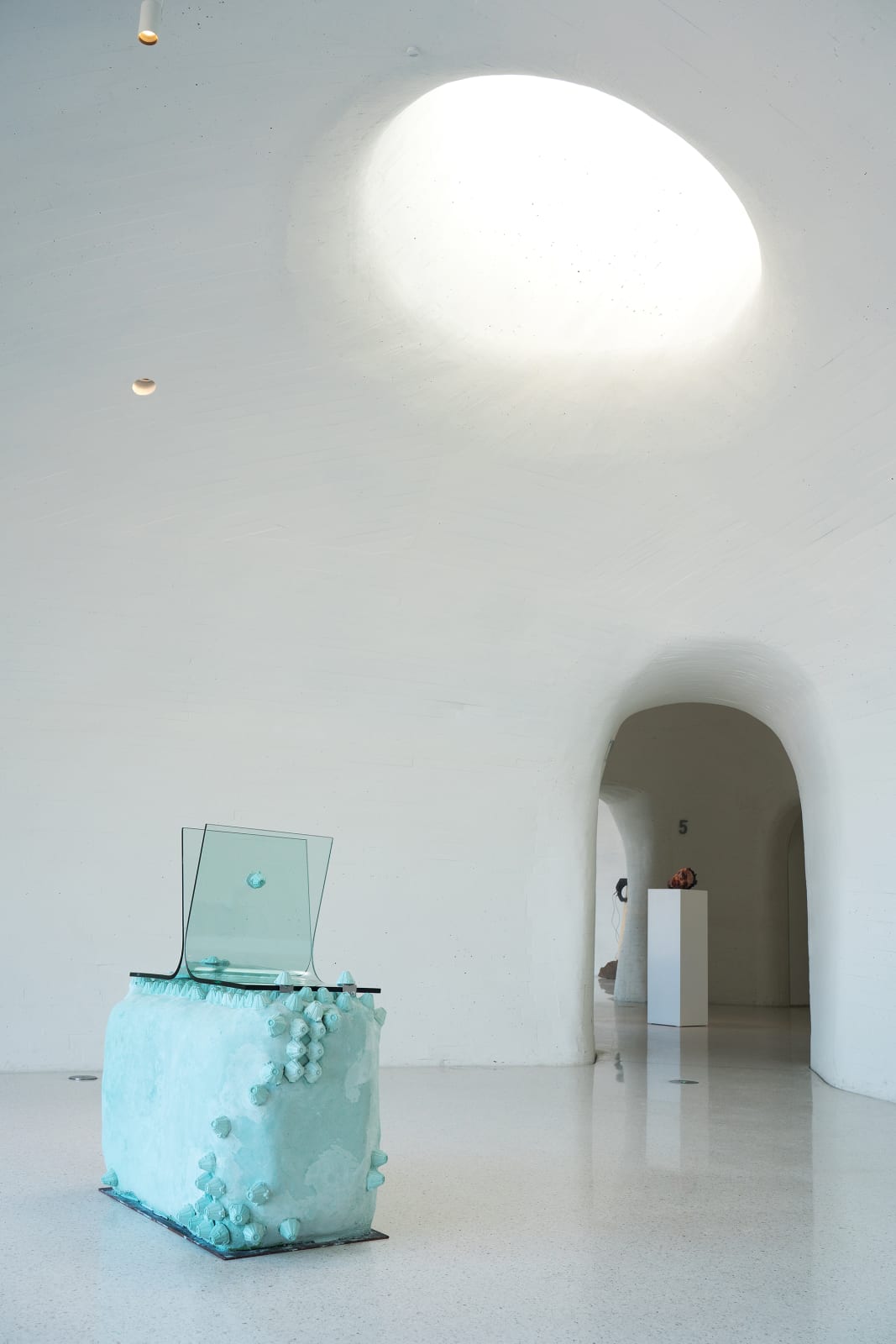Leelee Chan 陳麗同
Seaglass Equilibrium 海玻璃平衡, 2019
metal plate, concrete, polystyrene foams, pigment, seashell and found glass plates 金属板、混凝土、涂层聚苯乙烯泡沫塑料、颜料、贝壳、拾得玻璃板
101 x 91 x 45 cm
40 x 36 x 17 1/2 in
40 x 36 x 17 1/2 in
Further images
The sculpture Seaglass Equilibrium (2019) was inspired by the specific settings of the UCCA Dune Museum in Qinhuangdao. While entering the rooms of the museum, Chan noticed the ocean horizon...
The sculpture Seaglass Equilibrium (2019) was inspired by the specific settings of the UCCA Dune Museum in Qinhuangdao. While entering the rooms of the museum, Chan noticed the ocean horizon behind the full glass window and she started conceiving a sculpture that responded to this unique environment. Like all of her sculptures, it started from an object found sitting by the dumpster across her studio - two pieces of L-shaped glass plates, once components of a furniture piece. Their colour was evocative of the hues of the ocean and reminiscent of a sea glass resurfacing from sea waters. In the sculpture, the two glass pieces are facing each other, creating a sense of balance. Two seashells are precariously resting between the two L-shaped glass plates, held together by two small concrete sculptures casted from plastic egg package containers. Their shape recalls those of barnacles – marine creatures living attached to rocks in the sea. The fragile qualities of the egg packaging create a curious contrast to their negative counterpart - the hard-shell barnacles casted in hard-weighted concrete. They are in a state of equilibrium, while bringing awareness to the horizon in the background. At the same time, multiple concrete forms are attached to and grow organically from the base of the sculpture, like sea barnacles in their natural environment.
The round-edged shape and the marine colour of the sculpture recall the glass that is worn down by waves and rocks. Sea glass originates as pieces of glass from broken bottles dumped into the ocean, which are rolled and tumbled in the ocean for years until all of their edges are rounded off. It turns into a precious object that people collect and may even become a common DIY interior decor material, making its way back into human home.
The round-edged shape and the marine colour of the sculpture recall the glass that is worn down by waves and rocks. Sea glass originates as pieces of glass from broken bottles dumped into the ocean, which are rolled and tumbled in the ocean for years until all of their edges are rounded off. It turns into a precious object that people collect and may even become a common DIY interior decor material, making its way back into human home.
Exhibitions
2019
Notes from Pallet Town, UCCA Dune, Anraya Gold Coast, Beidaihe, China













